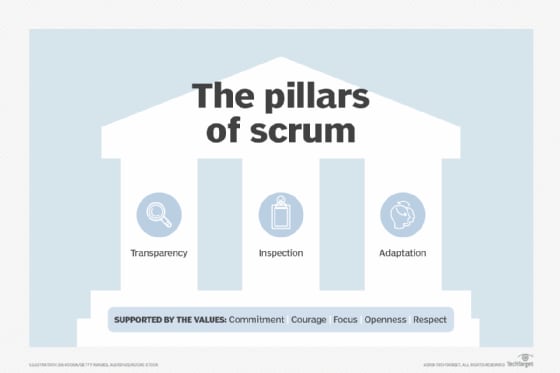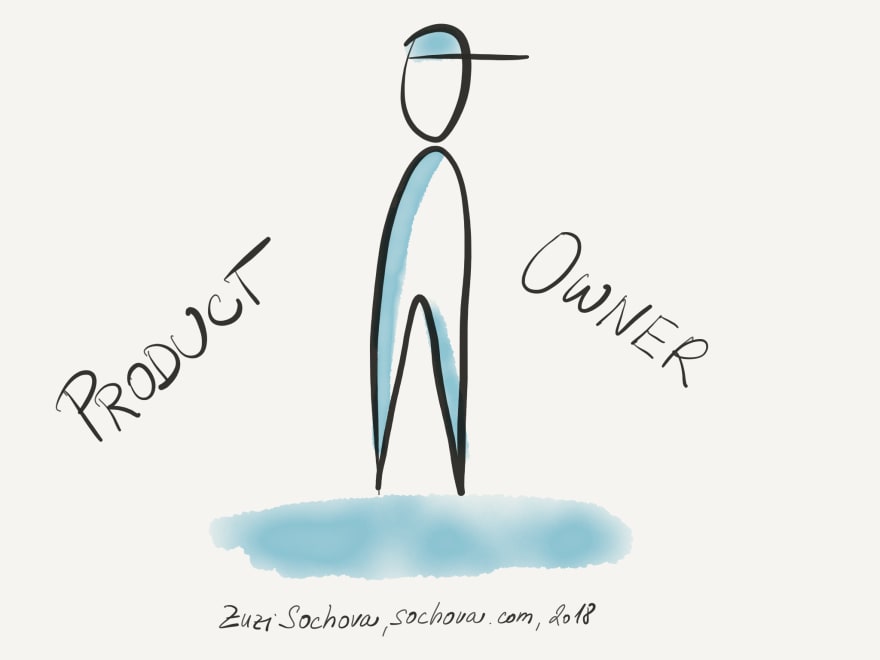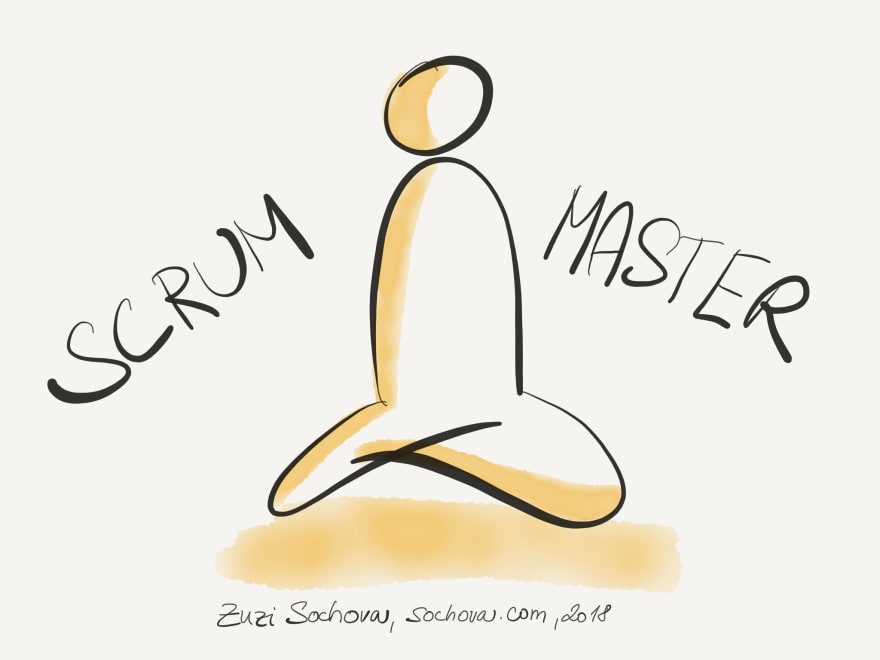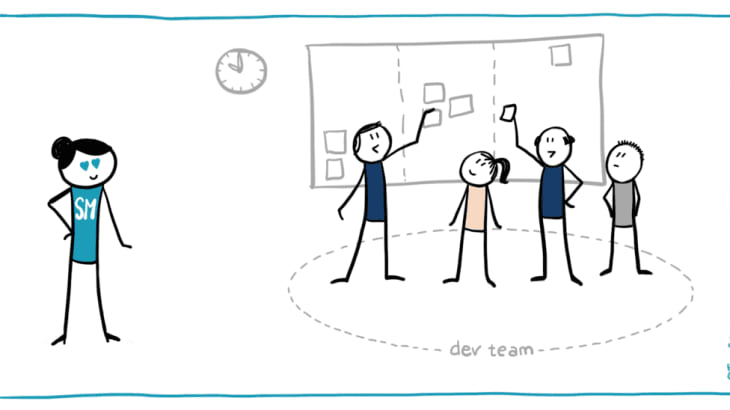SCRUM is framework that helps in fast and secure product development.
When to use?
When you have the mastery of technologies and the requirements of an application, there is no need to implement an agile methodology. In this case, the Layer Method can be used (where each step is well defined and done linearly). When requirements are not well defined or have no mastery of technologies, it is essential to use some agile methodology, such as SCRUM.
The Pillars of SCRUM
Transparency : Process transparency, delivery requirements and status. That is, everyone involved understands the functionality of the application as well as the time and effort required to implement something.
Inspection : Constant inspection of everything being done, so that no functionality is no longer implemented and those involved are always clear about what is being done.
Adaptation : Adaptation of both process and product to changes. Adaptations are always something complicated, of course, must meet the pre-established requirements, not departing much from what has been proposed. Regarding the process, deadlines and phases can be changed.
SCRUM Roles
We have three roles: Product Owner/SCRUM Master/ Dev Team
Product Owner
It is the central point with product leadership powers, and it is solely responsible for deciding which features and functionality will be built and in which order the processes should occur.
SCRUM Master
Responsible for helping everyone involved to understand SCRUM values, principles and practices. It can be understood as a facilitator, solving doubts and uniting people, not being boss of anyone.
Dev Team
It is the people who will actually build the project, the team must self-organize to fulfill what was passed by the Product Owner.
SCRUM Cycles
PRODUCT BACKLOG : At this stage, the Product Owner should give the general idea of what will be developed and present the features. Being in this phase defined the degrees of importance of the functionalities.
SPRINT : Period of time that Product Backlog functionality should be done. Being each Sprint made in a Time Box (time to complete a task) and each must have more or less time interval.
SPRINT PLANNING : Before each Sprint, a Sprint planning meeting is held, where BackLog is created (features that fit into a Sprint).At this stage, every day, members gather to answer three questions: What did you do yesterday? / What will you do today ? / What are your obstacles?
SPRINT REVIEW : After attending a Sprint, an assessment is made, in which the product is evaluated and adapted and verified if what is being done is as expected. It is the presentation of what was done in Sprint. It aims to verify what was developed.
RETROSPECTIVE : At this stage, an analysis is made of all that was done, as well as the habits that led to success and the habits that disrupted the teams.
DELIVERY STAGE : After all these processes, there is the end result of a product or the implementation of functionality that is testable to interested users.
If you can, Leave a comment saying your experiences with SCRUM.Thank you for everything! 😎









Top comments (0)